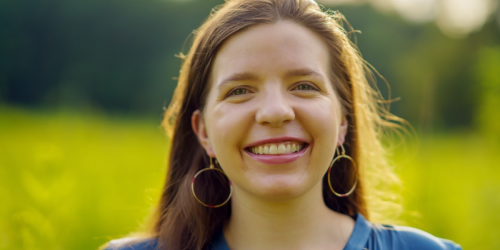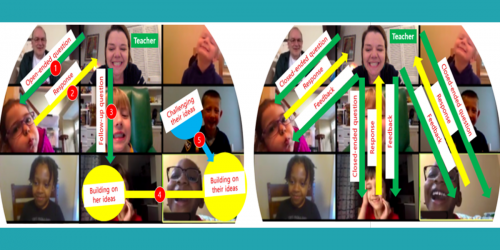
Understanding drug-resistant bacteria
Lucy student, Caroline Zellmer, shares her fascinating research on antimicrobial resistance in bacteria.
Miriam Dzah wins best blog award at Lucy Cavendish College Research Day 2022
For Research Day 2022, we invited members of the Lucy community to present their research as a presentation or a blog. Kindly sponsored by AstraZeneca, prizes were awarded for the best submissions in each category. And the prize for best blog went to Miriam Dzah, Human, Social and Political Sciences Undergraduate at Lucy.
Here’s what the judges had to say about Miriam’s blog:
“Great piece of work … it conveyed the social importance of research into an area I had no previous knowledge of. Thank you for facilitating my learning.”
“Clear passion and very interesting topic”
“I found this blog both clear and engaging”
Read Miriam’s winning blog below. Other blogs submitted to the competition will be published on the website in the coming months.

Passing recognition: the implications of ‘the Black nod’ on conceptions of recognition and strangeness among Black Germans
By Miriam Dzah
What is your research about?
Walking down the street with me when I was around 5, my father asked me why I didn’t greet the Black man passing us. I was confused. Why would my father nod at strangers? Aiming to revive my childhood curiosity as a source of epistemic joy and oppose “disembodied scholarship” (Simmonds, 2017), I try to answer that question 18 years on in my research. I want to find out how and why Black Germans nod at each other on the street. I combine auto-ethnographic research drawing on my own experience as a Black German with qualitative interviews with people living in Germany and identifying as Black. As the research centres on visual forms of agency, I incorporate a visual exploration of subjective experiences using photography to further interrogate the possibilities of seeing ‘race’ come into being through representation and performance. I ask participants to find a photograph of themselves in which they felt seen and recognised. In a dialogical process of “listening to images” (Campt, 2017) and “looking emotionally” (Moreno Figueroa, 2008), I invite participants to reflect upon gazes, safe spaces, emotionality of recognition and self-fashioning. I aim to resist the need to "assemble all the facts in an ordered way" (Tuhiwai Smith, 2021) encouraging nonlinear narration and storytelling. In my research, ‘passing’ receives many meanings beyond the ‘quick passing head nod’. Passing by can pose the question of whether or how to nod, or just to smile. The nod can come with uncertainty of whether one will ‘pass’ as Black. Participants recounted mediating between a worry about ‘stranger danger’ and a deep sense of connection and joy felt in the midst of the ‘German cold’. Importantly, previous studies on the nod neglect its gendered dynamics. At what age does a girl come to regard herself as the object of a racialised and gendered gaze? The nod becomes a phenomenon that is differently shaped in relation to gender, age, skin tone, class, or migration status. My research aims to disrupt the presumption that the nod is an “unspoken acknowledgement of universal Blackness” (Sangweni, 2020) in favour of highlighting the non-universality and intersectionality of Blackness. On a macro level, I aim to find out how the nod functions to challenge European ideologies of ‘racelessness’. Within the German context, ideologies of ‘racelessness’ and ‘colourblindness’ (El-Tayeb, 2011; Bonilla-Silva, 2017) relegate structural racism to the past rendering Black people epistemically and socially invisible. Research to date pertaining specifically to the experiences of Black Germans is scarce, also because the German census does not record ethnicity data. In a ‘raceless’ European amnesia, every racialised body can quickly be seen as an exceptional alien, a singular occurrence (El-Tayeb, 2011). I employ Pahl’s (2012) reading of Hegelian recognition “as a mutual acknowledging of transports (of one’s ceaselessly becoming someone else)”. Highlighting the ambivalent meanings of the German word Anerkennen as acknowledging, rather than just recognising, I aim to centre the importance of sociality in knowledge production. This lens conceptualises recognition and acknowledgement as not only visual but epistemic practices. Honneth’s (2015) interpretation of Hegelian social freedom as the "loosening of the boundaries of the self" is reminiscent of Lugones’ notion of multiple ontologies. Lugones outlines the predicament of bicultural people caught between “worlds” inhabiting the limen, “the place in between realities, a gap ‘between and betwixt’ universes of sense” (Lugones, 1990). Lugones identifies a liberatory potential in “understanding each person as many”. I aim to understand a seemingly ordinary gesture as a tacit way of remembering “one's other selves” (ibid.) and forming counter-hegemonic unofficial networks of recognition. The act of making strange faces feel less strange can shed light onto resistance as part of seemingly banal everyday practice.
Can you describe your research in one sentence?
My research is about the phenomenon of ‘the Black nod’, a brief head nod exchanged by Black people passing each other on the street.
Why is this research interesting to you?
My research stems from my personal experience as a Black German growing up in a small town in the north of Germany often feeling a sense of isolation. Searching the term “Black Germans” on the idiscover online library in the second year of my degree, I read the third entry in disbelief: “Genomic Loci Affecting Milk Production in German Black Pied Cattle”. It felt almost ridiculous. There is an immense gap in research about Black German experiences, especially because there is no institutionalised university-based centre for the research of anti-Black racism in Germany on German soil. So it has been very rewarding to study this topic close to my heart and build upon the work of Black German activists and researchers who have been working tirelessly to raise attention to experiences of racism in Germany.
I have loved interviewing Black Germans from different walks of life who were so kind to trust me and open up to me about very personal experiences of what it means to feel seen and recognised. It was especially interesting to talk to participants who were over 60 and shared stories so different, but also similar to my own. One participant told me about her childhood in 1970s East Germany and how she was so intrigued by seeing another Black person in a sea of white that she got into an older man’s car after exchanging a nod and a chat. Hearing such intimate stories made me incredibly grateful for the trust my participants had in me.

Lucy student, Caroline Zellmer, shares her fascinating research on antimicrobial resistance in bacteria.

Lucy student, Deepti Minj, shares her research on the social, political, and ecological consequences of military action.

Dongkeun Han shares his research on the distinctive patterns of video interaction between teachers and students.